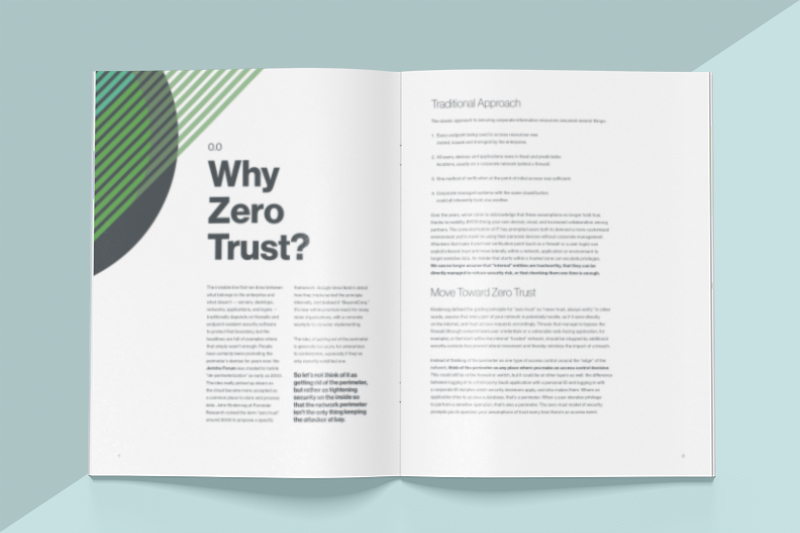Zero Trust: Going Beyond the Perimeter
In this guide, you’ll learn:
- The fundamentals of a zero trust approach to enterprise security
- The three pillars of zero trust – workforce, workloads and workplace – and their differences
- Risks addressed by each pillar of zero trust
- Options for implementing each of the three zero trust pillars
- Proposed maturity models to achieve zero trust for the workforce, workloads and the workplace
Mobility, BYOD (bring your own device), cloud, increased collaboration among partners, and the consumerization of IT have necessitated a new type of access control security.
Enter the zero trust approach.
A zero trust approach shifts the secure perimeter to any place where you make an access control decision and prompts you to question your assumptions of trust every time there’s an access event.
In this guide, Zero Trust: Going Beyond the Perimeter, we examine the genesis of the zero trust approach and introduce the three pillars of zero trust security:
- Zero Trust for the Workforce: People such as employees, contractors, partners and vendors accessing work applications using their personal or corporate-managed devices. This pillar ensures only the right users and secure devices can access applications, regardless of location.
- Zero Trust for Workloads: Applications running in the cloud, in data centers, and other virtualized environments that interact with one another. This pillar focuses on secure access when an API, a microservice or a container is accessing a database within an application.
- Zero Trust for the Workplace: This pillar focuses on secure access for any and all devices (including Internet of Things (IoT)) that connect to enterprise networks, such as user endpoints, physical and virtual servers, printers, cameras, HVAC systems, kiosks, infusion pumps, industrial control systems, and more.
Download Zero Trust: Going Beyond the Perimeter now and learn about each pillar, the risks they address, options for implementation and proposed maturity levels.


